Exactly a year ago, the Washington Nationals started the day seven games under .500, seven games out of first place, with a disastrous bullpen. But some key players came back from injury, and general manager Mike Rizzo made some pivotal deals for bullpen help, adding, among others, Daniel Hudson, who would go on to throw the last pitch in the Nationals' title-winning game in October.
But despite his long and successful history with the Nationals, Rizzo is in this really odd situation with the franchise. He is in the last year of a two-year extension he agreed to in the midst of the 2018 season, and under normal circumstances, he would've enjoyed the inherent leverage from a championship and negotiated a long-term deal.
If the 2020 season is played -- or if it's not -- Rizzo will be in unusual and unexpected circumstances to negotiate. His bosses recently flirted with the reduction of salaries for minor leaguers, a move so draconian that the team's big leaguers stepped in to provide cash. The Nats reversed course and restored that pay, but based on the team's fiscally conservative history, other organizational cutbacks could loom.
In light of the reshaped financial landscape for baseball, what would appropriate compensation be for Rizzo, whose success is in the realm of the best-paid baseball operations executives like Theo Epstein, Andrew Friedman and Brian Cashman? How much of what happens this year will factor into whatever offer is made to Rizzo?
For Rizzo, a truncated 2020 season is a significant complication when the professional stakes for him are high, but he's hardly alone in this.
Here's a pressure pick for each of the other 29 teams:
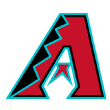
Arizona Diamondbacks: Jake Lamb. The 29-year-old could really use a bounce-back season before hitting free agency this fall, after hitting .208 over the past two seasons combined.
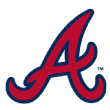
Atlanta Braves: Marcell Ozuna. It's possible he could've signed for more money than the one-year, $18 million deal he made with Atlanta, but he wanted a shot to rebuild his perceived value and get back into the market. Now Ozuna is going to have to test a very different landscape -- with a limited number of games to do damage and bolster his case.
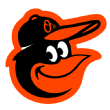
Baltimore Orioles: Mychal Givens. It appeared inevitable that the Orioles would flip the relief pitcher as a trade chip either at the end of spring training or sometime before the trade deadline. Now Givens' concerns probably will move beyond what address he calls home: With teams perhaps facing major financial losses, more players with four-plus or five-plus years of service time could be non-tendered. Givens will end this season with five-plus years of service, and last season, he had some tough moments (like a lot of Orioles did) and finished with a 4.57 ERA. Like a lot of players, he could use a high-end performance in a shortened season to cement his value.

Boston Red Sox: Ron Roenicke. It's a good thing the skipper has decades of experience in baseball and a nicely pliable personality, because the employment roller coaster he has been on is incredible. Roenicke, who managed the Brewers in five seasons, began this calendar year as Boston's bench coach, but when the Astros sign-stealing scandal erupted, Alex Cora was ousted and Roenicke was named the interim manager. Eventually, that interim tag was removed, but Roenicke is working on a one-year deal ... for a baseball year that will, at best, be truncated.
It's impossible to know how Red Sox ownership will evaluate his work, or if there's even a fair way to evaluate him under the circumstances. But it is what it is.
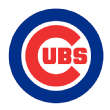
Chicago Cubs: Jon Lester. The respect for him as a big-game pitcher will stand forever, but as Derek Jeter once said, once you reach your 30s and you have a down year, everyone assumes you're just old. Lester, 36, had a 6.09 ERA in his last 11 starts in 2019, and he could use a 2020 season to mitigate the implication of those numbers, especially as he nears a crossroads in his time with the Cubs. This is Year 6 in the six-year, $155 million deal he signed with Chicago, and while it's unlikely the Cubs will pick up the $25 million option for 2021, Lester would set himself up for a decent deal if he performs at least OK. If he struggles in the small sample of a '20 season, however, it could greatly impact his offers in the winter.

Chicago White Sox: Edwin Encarnacion. He's 37 years old, and the slugger with 414 career homers has probably reached the time in his baseball life that his opportunities will come year to year. His 2020 deal with the White Sox includes a $12 million team option for '21, and while it seems unlikely that this would be picked up given the new financial context, he could help his own case in a shortened season.

Cincinnati Reds: Trevor Bauer. Because of his omnipresence in social media, there always will be a debate in front offices over production vs. distraction. Bauer could allay those concerns by getting back to his 2018 form and throwing well before he gets to free agency this winter.
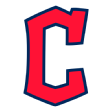
Cleveland Indians: Carlos Santana. The 34-year-old slugger is a free agent in the fall.

Colorado Rockies: Kyle Freeland. He was spectacular in 2018, posting a 2.85 ERA, and then a problem in 2019, when his ERA rose by almost four runs. Freeland worked on some stuff last year and into spring training this year, and his performance in 2020 stands to be a pivot point for him as he prepares to go through arbitration a second time.

Detroit Tigers: Miguel Cabrera. Detroit's DH showed up in spring training in excellent condition, seemingly intent on bouncing back from offensive troubles in 2019. But his career numbers remain on hold: 2,815 hits; 477 home runs; 1,694 RBIs.

Houston Astros: Dusty Baker. Houston owner Jim Crane hired Baker not only to manage a championship-caliber team but also to try to help navigate the players through a difficult 2020 season following the sign-stealing scandal. But the Astros don't have a long-term commitment to Baker -- his deal is for only one year, with an option for 2021 -- so it's hard to know how his work will be assessed.
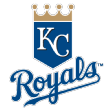
Kansas City Royals: Ian Kennedy. His five-year deal is set to expire in the fall, and whatever he accomplishes this season would be the platform for his free agency.
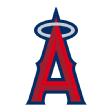
Los Angeles Angels: Billy Eppler. His contract option for 2020 was picked up, and for good reason -- in Eppler's time as GM, the Angels have markedly improved what had been a barren farm system, lured Shohei Ohtani and reshaped an ugly payroll situation. But Arte Moreno, the Angels' owner, made big cuts in the team's baseball operations department last week, and he'll soon have to make a decision on whether to re-sign Eppler to an extension.

Los Angeles Dodgers: Justin Turner. He's in the final year of a four-year contract, and at age 35, he'd be helped by a 2020 reminder for the Dodgers about how good of a hitter he is. L.A. has a lot of depth, and in the past, Turner has indicated he'd be willing to move around to facilitate the team's needs -- and presumably, that would continue to be the case if the Dodgers make a deal for Francisco Lindor. Turner hit .290 with 27 homers last season.

Miami Marlins: Jonathan Villar. He had 33 doubles, 24 homers and five triples for the Orioles last season, but Baltimore, looking to reduce its payroll, flipped him to the Marlins, who intend to play him in center field this year. This would be an opportunity to prove himself in a new spot.
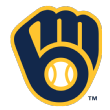
Milwaukee Brewers: Ryan Braun. Presumably, the Brewers won't pick up his $15 million mutual option for 2021. But with the universal DH looming, Braun will have more opportunity in the seasons ahead, so whenever he gets back onto the field, he'll be playing for his next deal (likely to be for one year).

Minnesota Twins: Marwin Gonzalez. When he reached free agency at age 29, the industry expectation was that Gonzalez, one of the most versatile players in the game, would get a three-year deal. But as it played out, he got a two-year, $21 million contract with the Twins, and this is supposed to be Year 2 of what will likely turn out to be the most lucrative deal in his career. Gonzalez needs another successful launch into free agency.

New York Mets: Rick Porcello and Michael Wacha. To round out their rotation, the Mets signed these two veteran right-handers, whose potential contributions became even more important once it was determined that Noah Syndergaard needed Tommy John surgery. Porcello and Wacha bet on themselves by taking one-year contracts, in the hope of bouncing back from their respective 2019 performances -- but now they'll have less opportunity to pitch, if any at all, before becoming free agents again in the fall.

New York Yankees: Masahiro Tanaka. Like Lester, Tanaka will be pitching for his next contract. He'll be 32 in November, and while he's incredibly respected in the Yankees organization, he'll need to demonstrate that he can continue to win despite diminishing velocity.
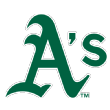
Oakland Athletics: John Fisher. It could be a pivotal year for the franchise, which came into the season seemingly with a chance to catch the Astros. Fisher's efforts to get a new ballpark might well be dormant in the face of greater public challenges, and the owner has gotten a lot of criticism for the stark cuts to minor league salaries.

Philadelphia Phillies: Didi Gregorius. After coming back from Tommy John surgery in 2019, Gregorius struggled, especially defensively, so he signed a one-year deal to play for Philadelphia and former Yankees manager Joe Girardi. He's 30 years old, and at this stage in his baseball life, he needs to get onto the field and demonstrate that last season was an outlier.

Pittsburgh Pirates: Joe Musgrove. He's 27 years old, and with a good season, he stands to become a nice trade chip for Pittsburgh.

San Diego Padres: Austin Hedges. With each passing season, baseball moves closer to the use of an electronic strike zone, and the catching skills at which the 27-year-old Hedges and some of his peers excel will simply not be valued in the same way. In the future, Hedges and the defense-first catchers like him need to demonstrate improved offensive performance -- and he needs as many games as he can get to make that happen. He hit .176 in 312 at-bats last season.

San Francisco Giants: Buster Posey and his Hall of Fame credentials. Following surgery, Posey hit for less power in 2019, posting a .368 slugging percentage. By all accounts, he looked better this spring and could really use another solid season or two to augment his chances for making a speech in Cooperstown. Posey won the Rookie of the Year award in 2010, the batting title and an NL MVP award in 2012, and he shared in three championships, so it's possible he's already done enough to get in. But with Posey now at age 33, his candidacy could probably use some more production.

Seattle Mariners: J.P. Crawford. His first year in Seattle didn't go as well as he might've hoped, with the former Phillies prospect batting .226 in 93 games. Crawford is 25, so the rebuilding Mariners have the advantage of at least some time in making an evaluation. But Crawford will be arbitration-eligible for the first time next winter, given the service time the players will receive, and regardless of the length of the 2020 season, he probably needs to hit better to make an impact.

St. Louis Cardinals (part 1): Dexter Fowler. He pushed his way back into the picture for St. Louis in 2019, improving his OPS 178 points over 2018. He's 34 years old this season, Year 4 of his five-year deal, and given the outfield depth St. Louis has, his opportunity in 2021 might largely be shaped by his performance this year.
St. Louis Cardinals (part 2): Andrew Miller. The respected lefty has had a lot on his plate, between staying prepared and serving as an influential voice in the players' union. St. Louis has a $12 million option on Miller's deal for 2021, and if salaries and payrolls are rolled back, it's possible the Cardinals will decline that option -- unless Miller crushes it in his performance this season. He is 35 years old.

Tampa Bay Rays: The team's collective window of opportunity. For a franchise with the smallest payroll in baseball, competing against big-money teams like the Yankees and Red Sox in the AL East means that absolutely everything must come together -- and for Tampa Bay, it has. The Rays have constructed an excellent team, with a high-end rotation, arguably baseball's deepest bullpen and a wealth of versatile position players. Tampa Bay came within one game of reaching the ALCS last fall. If baseball is played this year, the Rays could be incredibly dangerous. If it's not played, the Rays would join the '94 Expos and '94 Yankees among the best teams that didn't have a chance to win a World Series.
And if they don't play, the roster could be taken apart in the offseason, whether it be through the possible retirement of Charlie Morton or financially driven decisions. The Rays' time is right now, and it's not clear whether right now will happen.

Texas Rangers: Ray Davis and Bob Simpson, co-chairmen of the Texas ownership. The timing of the MLB shutdown has been absolutely brutal for the Rangers, who were supposed to open their new ballpark at the outset of this season. To get any baseball played will at least be a step forward, and it might be that the Rangers' home will be used as a safety net for other teams, or in the postseason. Their difficult year could be mitigated marginally if the Rangers play well in a shortened season, to build hope for a 2021 resurgence.

Toronto Blue Jays: Ken Giles. Under normal circumstances, Giles would've started this season as the Toronto closer before being dealt to a contender in July, before reaching the postseason and free agency in the fall -- plenty of time to build his résumé for the market. If there's a restart to this season, Giles now will have to perform well immediately.
